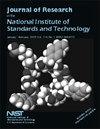美国国家统计局(NIST)在1922-1940年间进行的管道钢腐蚀数据分析及其与管道管理的相关性
摘要
1911年至1984年间,美国国家标准局(NBS)进行了大量的腐蚀研究,包括测量暴露在真实环境中的样品的腐蚀损伤。其中一项研究是在1922年至1940年间进行的一项调查,调查了埋在美国47个不同地点的裸钢和锻铁管道的腐蚀情况,这些地点代表了不同的土壤类型。在这项研究开始时,人们对地下铁合金的腐蚀知之甚少。本研究的目的是确定(1)是否需要涂层来防止腐蚀,以及(2)是否可以使用土壤特性来预测腐蚀并确定何时需要涂层。虽然这项研究很快就确定了某些土壤需要涂层,但它发现结果是如此不同,以至于即使是基于这些数据的一般性结论也必须谨慎绘制。调查人员的结论是,影响地下腐蚀速率的因素多种多样,因此规划适当的试验和解释结果是相当困难的事情,定量的解释或推断只能"近似地"进行,而且只能在试验的"限定区域"进行,直到获得更完整的资料为止。随着2002年《管道安全改进法案》的通过,在管道行业的敦促下,美国运输部管道安全办公室联系了美国国家标准与技术研究所(NBS于1988年更名为NIST),要求对这项研究的数据进行重新检查,以确定现代计算机和软件的信息处理和分析能力是否能够从这些数据中提取出更有意义的信息。这份报告是对调查结果的总结。来自原始国家统计局研究的数据是使用各种商用软件包进行统计分析的。重点是确定数据中的趋势,这些趋势可用于开发经验模型,以预测任何给定土壤化学和条件下预期腐蚀行为的范围。通过该腐蚀数据集发现了大量问题,但考虑到研究进行时对腐蚀和统计分析的了解有限,这些缺点并不令人惊讶,其中许多问题在研究结束前就被研究人员发现了。然而,重要的是要记住,在这项研究中,只有不到一半的地点提供了完整的土壤数据。与最初的研究一致,由于环境因素对结果的分散,合金的腐蚀行为的任何差异都不能得到解决,并且合金之间没有明显的差异。腐蚀损伤测量值与实测土壤成分和性质的线性回归和曲线拟合发现了一些微弱的趋势。这些趋势通过多元回归得到改善,并利用不确定度估计建立了代表测试中样品性能的经验方程。这些腐蚀数据的经验模型的不确定性很大,并且超出这些实验的参数空间或暴露时间的外推将产生额外的不确定性。结论是,可以从这些数据中建立估计腐蚀损伤分布和速率的方程,但这些模型总是具有相对较大的不确定性,这将限制它们的效用。这些不确定性是由于埋葬地点的年、季节和样本位置变化导致测量结果的分散造成的。数据表明,更完整的土壤性质测量数据集反映了与统计设计实验样品直接接触的土壤和地下水的性质,将大大减少这种分散,并使预测更具代表性。



Between 1911 and 1984, the National Bureau of Standards (NBS) conducted a large number of corrosion studies that included the measurement of corrosion damage to samples exposed to real-world environments. One of these studies was an investigation conducted between 1922 and 1940 into the corrosion of bare steel and wrought iron pipes buried underground at 47 different sites representing different soil types across the Unites States. At the start of this study, very little was known about the corrosion of ferrous alloys underground. The objectives of this study were to determine (i) if coatings would be required to prevent corrosion, and (ii) if soil properties could be used to predict corrosion and determine when coatings would be required. While this study determined very quickly that coatings would be required for some soils, it found that the results were so divergent that even generalities based on this data must be drawn with care. The investigators concluded that so many diverse factors influence corrosion rates underground that planning of proper tests and interpretation of the results were matters of considerable difficulty and that quantitative interpretations or extrapolations could be done "only in approximate fashion" and attempted only in the "restricted area" of the tests until more complete information is available. Following the passage of the Pipeline Safety Improvement Act in 2002 and at the urging of the pipeline industry, the Office of Pipeline Safety of the U.S. Department of Transportation approached the National Institute of Standards and Technology (NBS became NIST in 1988) and requested that the data from this study be reexamined to determine if the information handling and analysis capabilities of modern computers and software could enable the extraction of more meaningful information from these data. This report is a summary of the resulting investigations. The data from the original NBS studies were analyzed using a variety of commercially available software packages for statistical analysis. The emphasis was on identifying trends in the data that could be later exploited in the development of an empirical model for predicting the range of expected corrosion behavior for any given set of soil chemistry and conditions. A large number of issues were identified with this corrosion dataset, but given the limited knowledge of corrosion and statistical analysis at the time the study was conducted, these shortcomings are not surprising and many of these were recognized by the investigators before the study was concluded. However, it is important to keep in mind that complete soil data is provided for less than half of the sites in this study. In agreement with the initial study, it was concluded that any differences in the corrosion behavior of the alloys could not be resolved due to the scatter in the results from the environmental factors and no significant difference could be determined between alloys. Linear regression and curve fitting of the corrosion damage measurements against the measured soil composition and properties found some weak trends. These trends improved with multiple regression, and empirical equations representing the performance of the samples in the tests were developed with uncertainty estimates. The uncertainties in these empirical models for the corrosion data were large, and extrapolation beyond the parameter space or exposure times of these experiments will create additional uncertainties. It is concluded that equations for the estimation of corrosion damage distributions and rates can be developed from these data, but these models will always have relatively large uncertainties that will limit their utility. These uncertainties result from the scatter in the measurements due to annual, seasonal, and sample position dependent variations at the burial sites. The data indicate that more complete datasets with soil property measurements reflecting the properties of the soil and ground water directly in contact with the sample from statistically designed experiments would greatly reduce this scatter and enable more representative predictions.

 求助内容:
求助内容: 应助结果提醒方式:
应助结果提醒方式:


